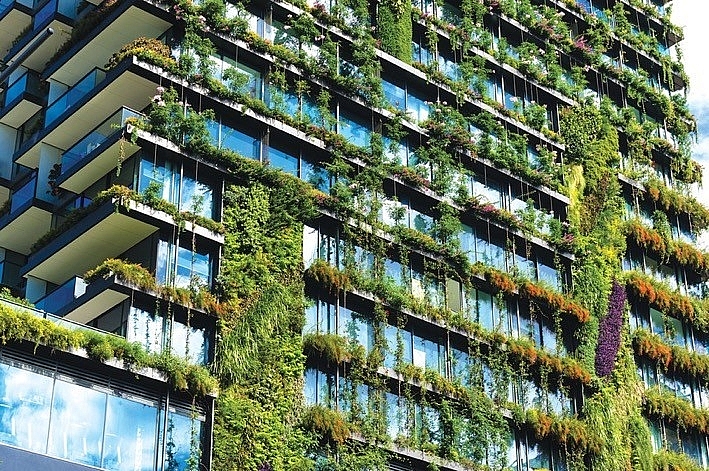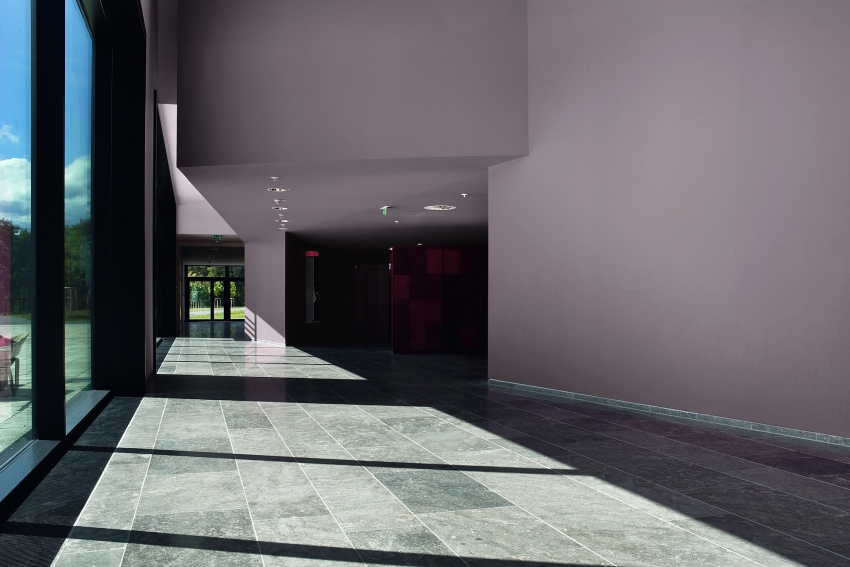Going smarter and more sustainable: value proposition for urban development
 |
| Beng smart and more sustainable has become an urgent need in urban development |
It is estimated that the world's population grows by 74 million people every year, which causes concerns the global population could reach 11 billion by 2050. By that time, humanity would demand a much larger planet – one that is three-times as vast as our current Earth.
Urbanisation is taking place rapidly as an inherent result of economic growth, emerging cities are also developing vertically to meet the high demand of new residents.
With these two trends, people are always afraid of the unpredictable effects of climate change and challenges like natural resources running out. Recent statistics showed that urban areas account for about two-thirds of energy consumption and 70 per cent of emissions which cause global warming and climate change. This is the premise for the "smart city" concept to come to life.
Construction experts have identified five core pillars to developing smart and sustainable cities, including sustainable quality; reducing energy consumption; saving resources; health and safety; and reducing environmental impact.
In construction, paints and other materials are critical to the quality of buildings. Currently, they are also designed based on the five pillars, helping to speed up the process of developing smart urban areas and cities while addressing requirements on sustainable development.
Smart construction solution
 |
| Advanced paints technology could help to save up to 20 per cent of energy used for lighting in buildings |
In this industry, various smart solutions have been proposed and applied to develop cities in a smart way.
In this regard, Pamela Phua, general director of AkzoNobel Vietnam – part of AkzoNobel, a leading paints and coatings company with a long track record of sustainable development – said, “It can be said that the five core values of smart city development are the critical elements, helping to solve the most urgent problems of our time. Beyond that, we should acknowledge that the key to build smart cities is humanity, who will run the cities of the future."
“Hence, from AkzoNobel’s perspective, no matter what technology, material or technique we use, the final goal of cities is becoming more sustainable and contributing to the lives of people living there. Then, dealing with the challenges in reducing energy consumption and environmental impact is also important,” she noted.
| In construction, paints, as well as other materials, are critical to deciding the quality of buildings. |
Technological innovation towards green and smart is taking place actively in the paints industry to meet market demand. For instance, Anti Bacteria technology helps to prevent mould and harmful bacteria, Paint Happy helps to neutralise paint smell, and Airfresh Technology is capable of absorbing formaldehyde (which is banned from food) are contributing to creating healthier and heath-friendly living spaces.
In additions, KeepCool helps to reduce wall surface temperatures by up to 5°C, thereby reducing cooling costs by 10-15 per cent thanks to the ability to maximise solar reflection.
These technologies are available in AkzoNobel's Dulux Professional products for the project segment, bringing the same benefits to not only resident projects but also office and service buildings.
More popularly and noticeably, gardens have been put into the campus in recent urban areas with green walls, hanging gardens, sky parks, and more which not only elevates the look and feel but also help to save energy and reduce noise.
Moreover, buildings with renewable energy systems such as solar or intelligent lighting systems with sensors to help save energy have become more popular. Other advanced building materials are also contributing to the trend of green architecture such as smart bricks to help cool buildings or diffusing glass to reduce heat and energy consumption.
What the stars mean:
★ Poor ★ ★ Promising ★★★ Good ★★★★ Very good ★★★★★ Exceptional
 Tag:
Tag:
Related Contents
Latest News
More News
- The Kross ascends in Ho Chi Minh City's business heart (October 10, 2025 | 17:16)
- ESG-driven sustainability to define Vietnam’s green real estate (September 19, 2025 | 11:35)
- Tan Thuan Tower open for high value-added and innovative tenants (September 10, 2025 | 10:00)
- The new home of modern business at Hanoi's Starlake (August 19, 2025 | 08:00)
- Forum focuses on financial solutions for ESG in real estate (June 18, 2025 | 12:12)
- Frasers Property Vietnam moves towards green real estate leadership (May 08, 2025 | 11:25)
- Keppel collaborates with leading brands to enhance urban living in Vietnam (April 04, 2025 | 09:26)
- Strengthen partnership and efforts to promote zero energy buildings in Vietnam (February 26, 2025 | 17:31)
- Haus Dalat ESG real estate project holds opening ceremony (February 24, 2025 | 11:12)
- Best golfers awarded at Swing for the Kids 2024 (October 13, 2024 | 08:00)





























 Mobile Version
Mobile Version